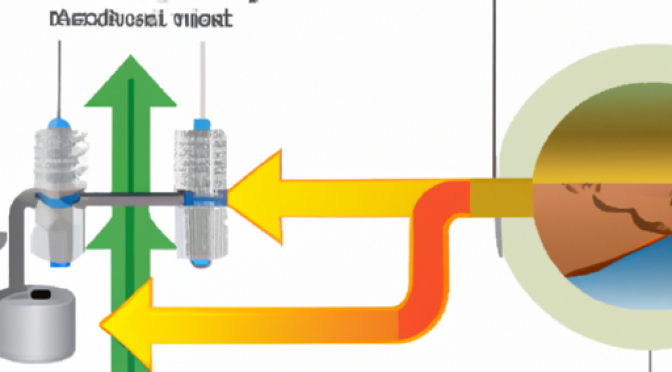Introduction
The use of geothermal energy is becoming increasingly popular for sustainable energy production. Geothermal energy is used to convert thermal energy stored deep underground into electricity. This process enables clean and renewable energy production, reducing environmental pollution and the use of fossil fuels.
Benefits of geothermal energy
There are many advantages to harnessing geothermal energy. Firstly, geothermal energy comes from a renewable source and is therefore sustainable in the long term. Secondly, geothermal energy releases a minimal amount of greenhouse gases into the atmosphere, thus reducing the risk of climate change. Thirdly, geothermal energy is always available as it is not dependent on weather or other external factors. Finally, the use of geothermal energy can also bring local economic benefits by contributing to the development of local communities through investment and job creation.
Integrating geothermal energy into the electricity grid
Integrating geothermal energy into the electricity grid involves several steps. First, geothermal energy sources need to be identified and evaluated for their potential energy production. This includes geological investigations, temperature measurements and the exploration phase. Once the geothermal energy sources have been identified, geothermal drilling is carried out to access the thermal energy stored in the deeper layers.
The next step is to harness the geothermal energy. The hot water or steam extracted during drilling is brought to the surface and the thermal energy is converted into electricity. This is done using geothermal power plants, in which steam is driven by turbines, which in turn drive generators to produce electricity.
The electricity from the geothermal power plants is transmitted to the local electricity grid. The electricity generated by geothermal power plants contributes to the local energy supply, reducing fossil fuel use and carbon emissions.
Challenges and future opportunities
Although the exploitation of geothermal energy has many benefits, it also faces a number of challenges. One of these is finding and exploiting the right geothermal energy sources. Not all areas have the right temperature and geological conditions to harness geothermal energy.
Furthermore, the upfront costs of geothermal energy can be high, as geothermal power plants can be expensive to build and operate. However, in the long term, geothermal energy can become more economical as geothermal power plants have low operating costs.
Future opportunities include expanding the use of geothermal energy and developing the technology. New methods and technologies may be available to exploit geothermal energy more efficiently. In addition, the integration of geothermal energy with other renewable energy sources, such as solar or wind, could create further opportunities for sustainable energy production.
Summary
The integration of geothermal energy into the electricity grid is an important step towards sustainable energy production. Harnessing geothermal energy has many benefits, such as energy from renewable sources, reduced environmental impact and local economic benefits. Although it also faces a number of challenges, further development and integration of geothermal energy with other renewable energy sources can contribute to the growth of sustainable energy production in the long term.
∑: energy, geothermal, electricity, production, sources, sustainable, renewable, benefits, plants
